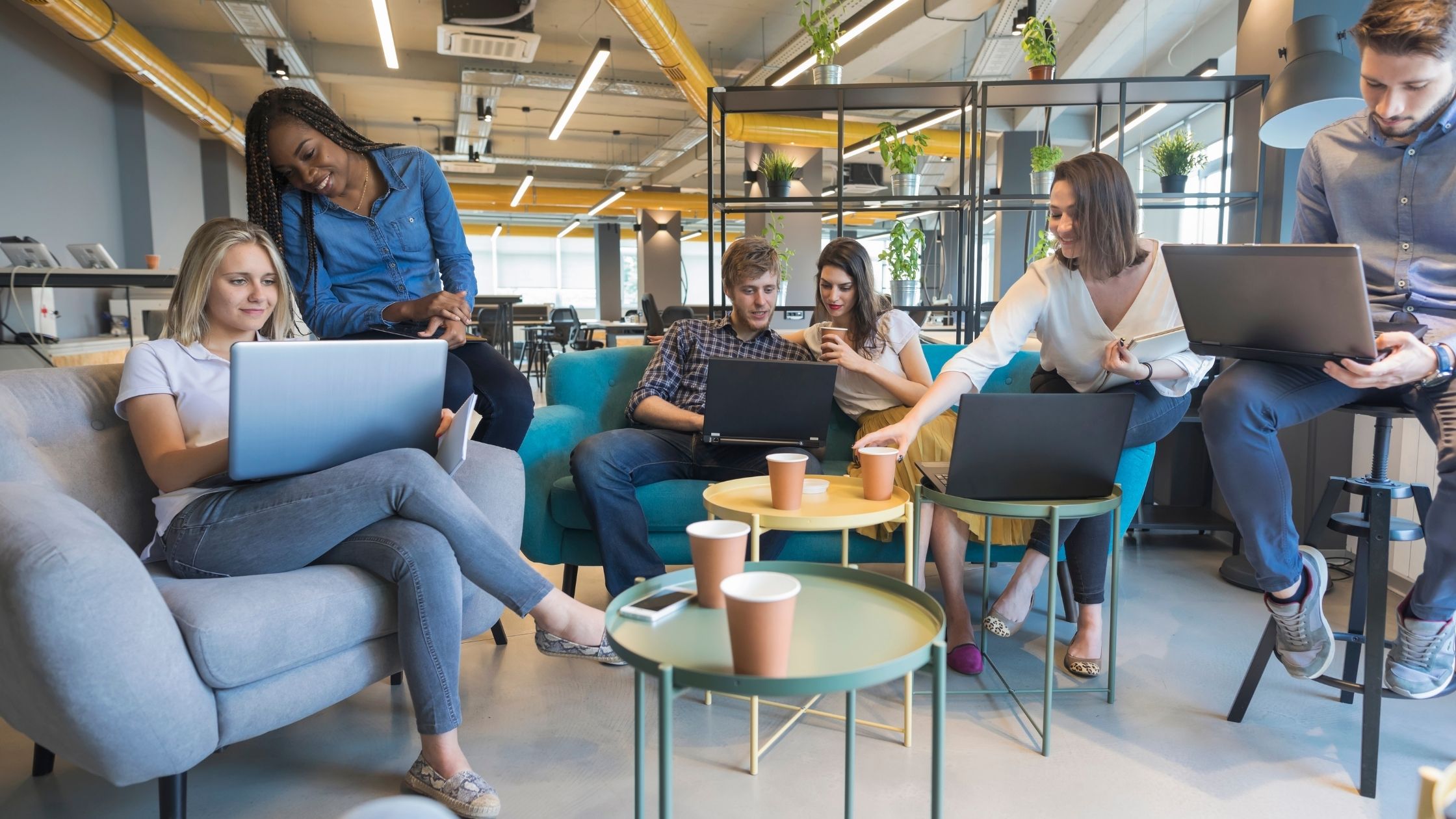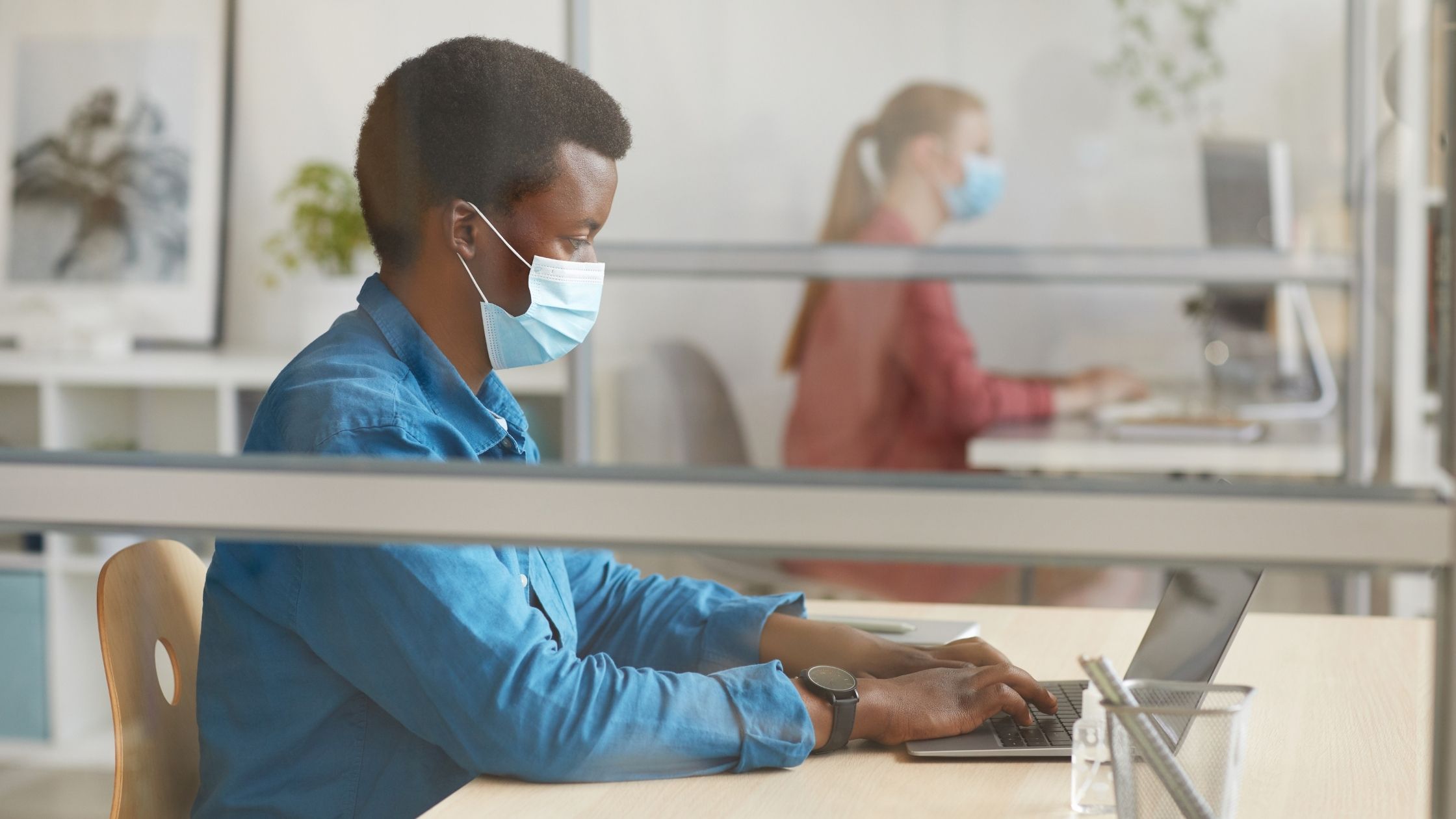Remember when the pandemic first hit, and people flooded grocery stores in droves? Like a panic button hit accidentally, everyone thronged to get supplies and stock up. Who knew what was about to happen?
Businesses shut down, shops closed, airlines went bankrupt and the whole world ground to a halt. Companies that could not obtain loans to send their employees on furlough had to downsize drastically. The jobs crisis soon turned into a social crisis.
COVID’s Impact on the Workplace
Small, medium, or large. None could escape unscathed, no matter what the size of the business. With government-mandated stay-at-home orders and shutdowns in every major city across the world, many workplaces were upended.
The pandemic has become the single most disruptive event to everyday life since generations, and that’s not including the gate-crashers at Zoom meetings, barking dogs, sweatpants, and homeschooling. It forced both employees and employers to adapt and pivot, settling into new routines and procedures.
Construction companies, theatres, restaurants, and the tourism industry were the ones hit hardest, with many national economies taking a huge dive. Countries like the UAE, Thailand, and Maldives whose service-based economies fuelled the rest of their industries struggled most.
Oil tankers anchored at harbours soon dotted entire coastlines as demand for fuel shrunk dramatically and oil rigs that could not be shut down continued to pump precious oil. White-collar workers who subsist on providing services to inner and inter-city commuters could only sit at home and watch with horror as the pandemic spread like wildfire.
With almost 15 million flights cancelled in 2019, it is no surprise that by mid-2020, unemployment rates had already skyrocketed to nearly 24% across all industries, a situation worse than the Great Depression. Even in the beginning of 2021, about 90% of workers globally were in places facing partial or full business closures.
As countries gradually claw their way back to stability and a sense of normalcy, workplaces have adapted immensely. Coworking spaces and hybrid models continue to garner popularity as businesses capitalise on cost-cutting measures.
COVID Culture in the Workplace- What Does It Look Like?
The current work culture at numerous companies has evolved and been turned around almost 180 degrees. One word: adapt.
Remote Work
The technology to facilitate WFH (work from home) has been around since the 70s. A model that allows managers to monitor employees using screen and video-sharing programs, went against the traditional norms of working. A universal assumption existed that touted working in office space as the optimal business model.
COVID was the tipping point that diverted organisations towards the WFH concept. Social distancing and smart lockdowns in both residential and commercial areas meant that WFH was the only possible solution short of literal closure.
As employers were forced to make a cultural shift that embraces remote working, a rollout of video conferencing services gained momentum, serving as a facilitator for all communications, including investigations, depositions, hearings, meetings, arbitrations, and even social interactions.
This significant acceleration in the transition to a remote model is here to stay. Employers are increasingly faced by the demand for WFH flexibility, which is likely to prevail post-pandemic. Employers may even have to make it mandatory to facilitate people with disabilities.
Workspaces
Physical workspaces have adapted tremendously and are likely to continue functioning on the revolutionised model. For businesses that require limited space, temporary hoteling arrangements for essential tasks and shared spaces have become the norm. Companies that function with wide spaces realised the benefits of a socially distanced manner and may prefer to maintain that model.
Many organisations were forced to make other changes as well, such as modified workflow processes, virtual platforms, and paperless tools. Companies were quick to adopt electronic signatures as a norm; a service that has existed for a while but one gained impetus from the pandemic.
Some employers may wish to revert to traditional ways of conducting business, but employee demands and the changing technological landscape may be a hurdle to that plan. In verisimilitude, some employees would also require training in innovative habits.
COVID Interaction at Work – How Does It Interact with Employees?
When the pandemic first hit, some 30% of employees stated that their work-life had deteriorated, while mandatory WFH directives were perceived as having positive impacts. Many welcomed the chance to spend more time with family while fulfilling their leisure activities and caring duties as well.
Professional/Personal Overlap
Remote working has given colleagues a bird’s eye view of others’ personal interactions at home. As they communicate remotely, people are often interrupted by something as minor as a child or cat suddenly appearing on screen, giving others a glimpse into their personal lives.
These everyday interactions seen on-screen foster a sense of community that people miss being away from the office. Such glimpses into personal interactions at home are likely to build stronger connections that encourage seeing work colleagues as more than just that. So, the next time a deadline is missed, it may be easier to understand and acquiesce.
Competence Over Presentation
“Dressing for success” has taken on a new meaning in the lockdown. Not only has casualwear taken precedence, but people are also increasingly buying more tops than bottoms since video calls are mostly restricted to a view of the top half. Some companies have even started Pyjama Mondays as a fun activity for team building.
Since WFH directs focus away from appearances and towards what people can do, it also places more emphasis on expertise and talent, rather than people’s apparel.
Workplace Innovations
Employers have since had to implement various measures to satisfy social distancing requirements. These measures include restricting the number of people allowed in any room, while workstations themselves have had to be modified.
Wooden dividers and plexiglass installations were first implemented at restaurants. Now they extend across industries as managers have had to innovate new ways of running workplaces.
Revamped cleaning policies reinforced repeatedly were mandated. More frequent fumigation and disinfecting measures are more commonplace now, to the extent where workers demand such procedures for a safe and positive work environment.
Professionals and experts across industries have had to reshape their thinking strategies to appeal to an audience across virtual space. They must sell their credibility and expertise while learning to coney their most authentic self.
The Future of Coworking Spaces & What is Coming Next?

As coworking spaces grow in popularity with leaps and bounds (a 27% increase from 2020), the hybrid model is gaining momentum. The flexibility that allows people the choice to WFH or work at the office is becoming the new norm. Additionally, there are some adaptations in the pipeline we are likely to see in the coming years.
Office Building/Elaborate Conference Room
If focused work can be completed remotely, employers are realising that shared spaces are mostly just for hosting conferences, meetings, or other major events. There is a chance that having a corporate office in the city center despite the real estate expenses becomes a status symbol; bait for interns and potential employees.
Office buildings will take on the role of being facilities to gather and host meetings. People will go there just for the personal touch, the sealing handshake. Offices themselves have and will continue to implement partitioning measures, setting up privacy booths to encourage contactless interactions.
Increased Demand to Reduce the Digital Divide
Digitalisation was a hot topic of conversation among learned circles for many years, but now it has attained the spotlight even more. With hundreds of millions of people across the world lacking access to the internet and thus being unable to work, this loss of talent must be corrected.
While some lack the broadband infrastructure for 5G rapid communication, numerous places still survive on mere mobile data. The global push towards digitalization is seen as a ray of hope for these millions of people.
Equity for Women
The flexibility of hybrid workplaces means that workers can balance their home and work lives more efficiently. 31% of women who took a break from their careers to attend to their children stated that they had to because their company was too rigid about its policies.
Career breaks could end up resulting in tens of thousands of lost dollars in terms of future wage growth, lost wages, and lost retirement funds. Offering a wider variety of options might not necessarily bridge the gap completely, but it goes a long way towards the provision of a more gender-balanced workplace structure.
9-to-5 May Become Obsolete
With greater flexibility in timings, people find it easier to attend to tasks and complete them as they see fit. The relaxed rules for starting and ending workdays allow workers to juggle their home and work lives in the same place.
While this could mean that employees are feeling pressured to respond to emails and messages at all times of the day, it basically has taught employers that rigidity can be counterproductive. A discussion about priorities would help workers co-create better work schedules.
Conclusion
Organisations across the globe have relied on their own resilience and innovation to adapt to COVID and its ramifications. Some workplaces temporarily transitioned to a WFH model, while some have realised its benefits to their industry and made the hybrid model a permanent feature.
Coworking spaces and remote working will continue to rise in popularity as people adapt to newfound ways of balancing their home and work lives.



